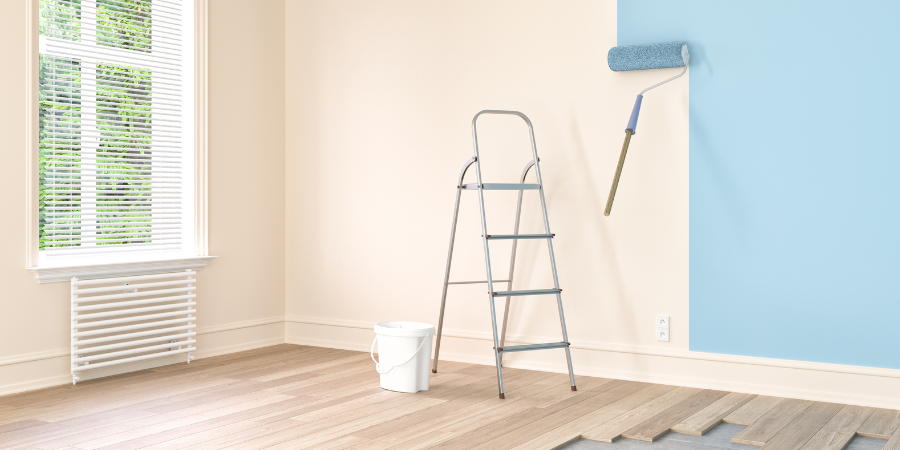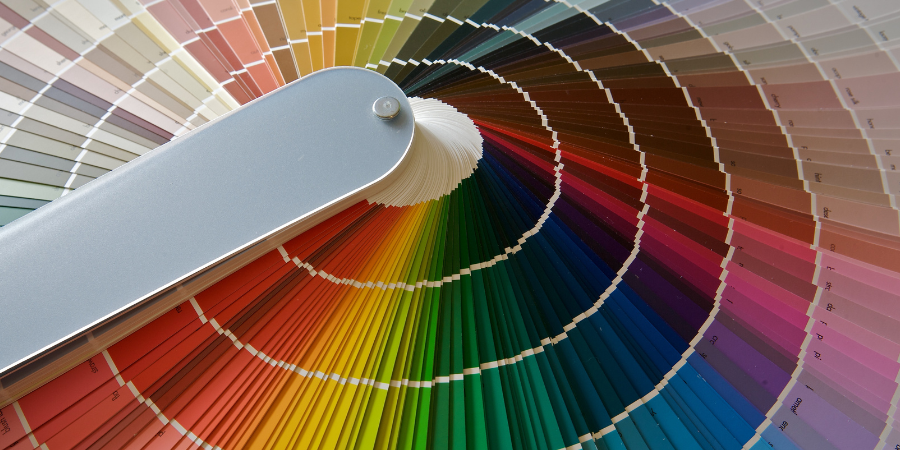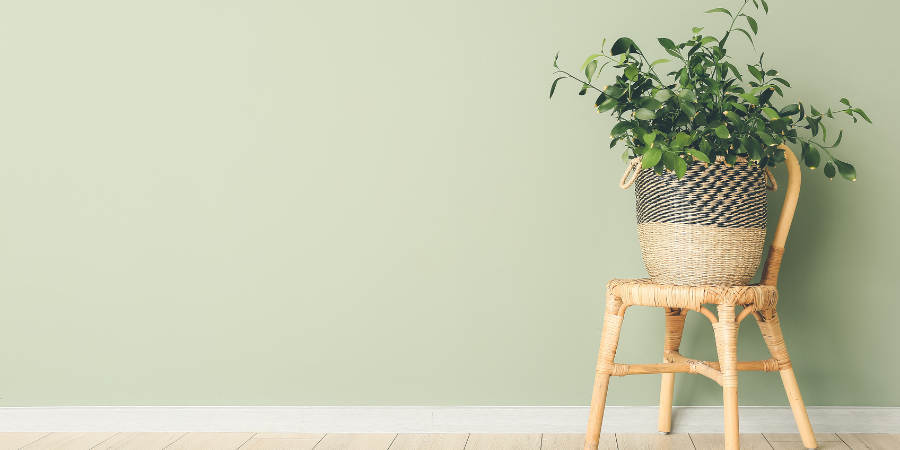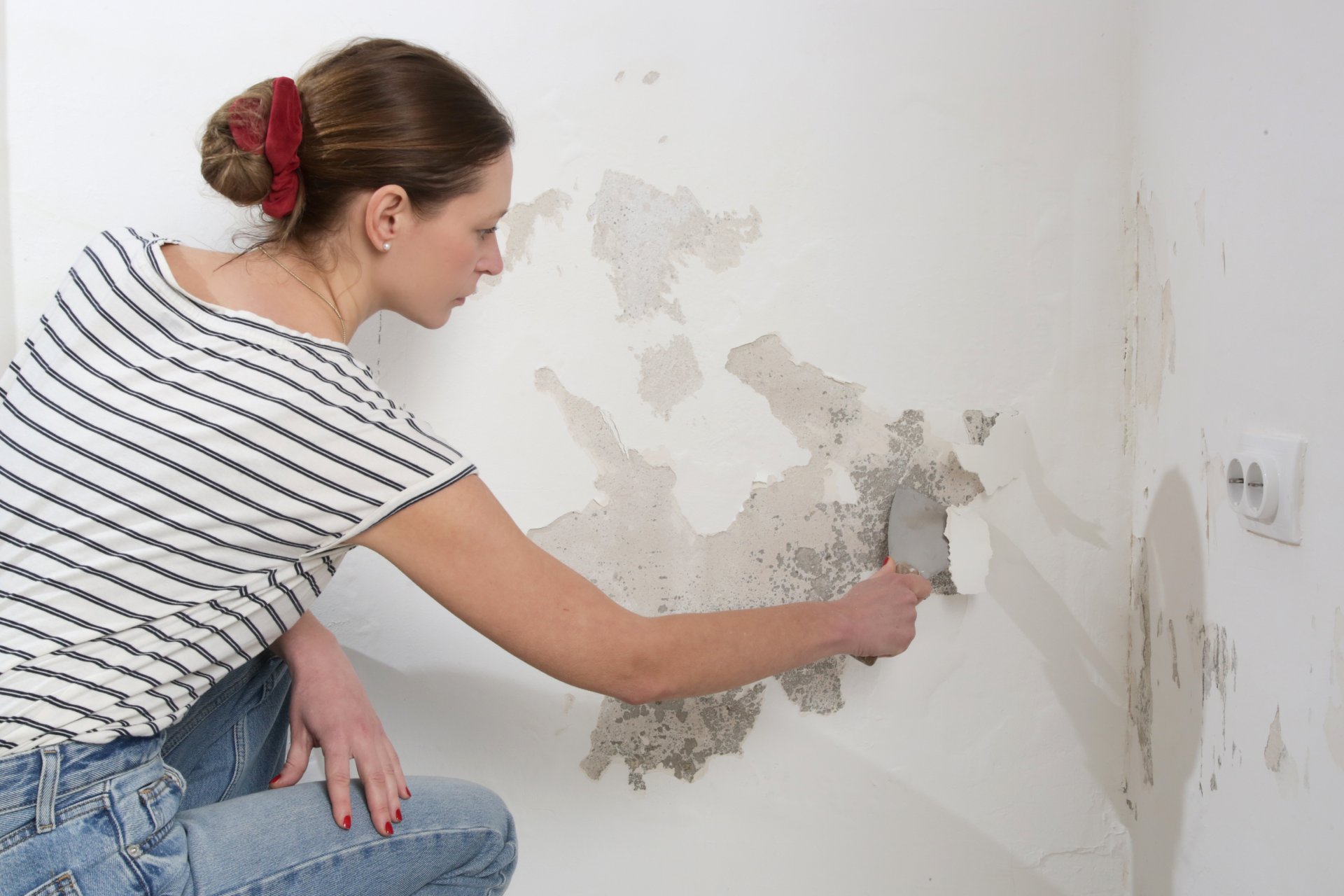Choosing interior paint colors may be a challenging task. It’s a choice you’re going to have to live with for at least several years, so you should really choose wisely. Let us help you with some easy tips and ideas
You do not need to restrict yourself to specific color schemes during your home renovation, nor do your interior colors need to match your exterior paint. However, there is some information you need to get right to ensure your paint job is perfect the first time.
You could search the internet or consult a professional painting contractor. However, you still may not find the right color combination for your home. Your creativity and ingenuity are part of the process, whether you paint it yourself or hire someone that can give you sure guidance in picking the best interior paint colors.
Check out our twelve (12) tips before you repaint your home:
1. Find Your Color Inspiration
Finding the colors that inspire you is crucial for achieving your desired look during your house painting. Fortunately, there are numerous resources you can browse to find the colors you love and how they fit with others on the color wheel.
To start, you can consult in-person sources. Magazines, catalogues, and even paint stores are fantastic sources of inspiration. These sources also show how a room can look with the color, which gives you a better feel for how your space will turn out.
You can also consult various websites. From Pinterest to Instagram to retailer sites, you can see how color could work in your space. These are great options for real-time inspiration, especially if you want something trendy or unconventional.
2. Match the Color to the Intended Atmosphere
Before you get your heart set on a specific color on the color wheel, you also need to consider how the space will be used. Since color can really set the mood of a room, it’s an essential factor in which colors will suit the purpose.
For example, you might want a warm, energizing color for a home office but a soothing tone for your bedroom. Choosing the right color for the space can create the right feel for what you expect to happen in it.

3. Use the Color Wheel to Find the Right Paint Scheme
The color wheel may seem simplistic, but it’s quite helpful during a house painting project. You need the finishes, furniture, and fabrics to match the interior paint color; otherwise, the room won’t look how you envision.
With colors, opposites really do attract. That’s where the color wheel comes in. Once you know what you want the main color to be, you can look at the wheel. Any shade opposite the one you want will complement it.
You can easily consult a color wheel once you know what you want for the main color, and even a basic model can help you see the options for your rooms with the colors that inspire you.
For further reading on the Color Wheel and how to use it try this comprehensive guide.

4. Applying Color Theory During a Home Renovation
A color wheel helps you apply color theory to create your paint scheme. After all, rooms don’t just have one color! However, a color wheel does not explain the psychology or cultural connotations of color. That’s where color theory comes in.
Color theory helps you sort out items like the contrast in the room and whether it has a positive psychological impact when you walk in. For example, in the United States, blue is often paired with grey because both colors represent trust in the culture.
Wish to know more about Color Theory? Watch the Video below and learn more about using color at home:
5. Look at the Whole Interior Color Scheme
A common issue with home painting, especially on the interior, is not considering the adjacent spaces. Your home’s rooms are not isolated, and the house painting color schemes need to flow together if you want the result of your home renovation to be harmonious.
Typically, you want to ensure the colors on each floor of your home fit a color scheme, from accent walls to staircases. The best way to do this during a home renovation project is to stick the swatches next to each other.
6. Be Creative with Neutral Colors
Neutral paint colors do not have to signal a cold, sterile space. You can improve a neutral color palette with judicious color in the area or an addition to your selected shades. With this, even the most neutral, relaxed room can feel inviting.
Many decorating styles start with neutral shades, especially if it’s a spec build. You can pair neutral colors with a pastel accent wall, painted ceiling, or vibrant room decorations to add personality to the space.

7. View Paint with the Room’s Lighting
Lighting is essential to how a paint color looks throughout the day. Yet many people do not test their paint swatches under the room’s intended lighting, whether natural or artificial, until the project is completed.
Natural light typically produces the truest color when compared to your swatches. However, the time of day can also dramatically affect the way your interior paint looks. Additionally, the bulbs you use around your home, especially at night, can change how the paint looks on the wall.
Your best bet is to look at your swatches throughout the day in the room. However, during a home renovation, that’s not always possible. You should consult with your contractor to find a comparable situation to view swatches.
8. Examine the Paints You Intend to Use
Adding prints to a room, whether on furniture or in decoration, is a great way to express individuality. You can also use prints to get color inspiration for your house painting project since many use complementary colors.
Paint stores are adept at creating colors from samples, so you can always take a fabric sample in to see what they can do. Then it’s up to you whether that’s the main color, an accent, or simply the trim for the room.
9. Trick the Brain Color Combinations
If you want to, you can also dramatically change how your rooms feel with a little bit of color to trick the brain. The right color combinations can make a room feel bigger, smaller, cozier, and so on.
For example, you can make a narrow room feel wider if you pick a light color for the long walls and apply a slightly darker hue to the short ones. This difference tricks the eye into believing there is more space without a major home renovation.
You can use this trick in multiple ways, including using warm colors to make a room cozy and using cool colors to make a room feel smaller. If you would like to use these ideas to change the feel of your space, consult the local paint store or professional interior painter.
10. Study Historical House Painting Choices
While you may not live in a historical home, historical color schemes are a great source of inspiration. There’s a reason these are classics; you can use them even if you’re not doing a traditional decoration scheme.
For example, Damask Yellow (Benjamin Moore) is a rich, warm color for walls. It fits in with decorating styles from craftsman to mid-century modern. You could use it as part of your own unique color palette.
11. Learn How to Talk About Color
Color terminology goes beyond the color wheel. Before you go to the paint store, it’s best to brush up on your color terminology to ensure you’re on the same page with your salesperson.
- Hue – A color, such as red, green, or blue. The hue value is the lightness or darkness level within the paint.
- Saturation – How much of a hue is in a given color. For example, you know that there is a whole gradient from white to pink to red. This is done by increasing the saturation of red in the paint.
- Intensity – The brilliance of the color. Primary colors (red, blue, and yellow) are the most intense, while secondary colors are mid-range. As you get to tertiary colors and beyond, the intensity lessens.
Using these terms helps ensure you mix the right paint colors for your house painting. These terms help you avoid missteps, and you can look further into each one to ensure you achieve the perfect color for your interior painting project.
12. Test the Paint Color Out
You should always test out the paint in a space before you commit. If you’re doing the whole room, make sure you put swatches on each wall so you can see how the color changes. In most cases, a sample size or stick-on swatches is plenty to test a color for house painting.
When you visit your local paint store to consult, look behind the counter. You will see many buckets of paint that have been returned by people doing home renovations who skipped this step. That’s a lot of wasted money and effort you can avoid.
When you have found the right interior paint color for your space, make sure you also calculate the amount of paint you will need. Too much paint is a common problem and a waste for everyone, including the environment.
Conclusion
The colors you choose for your walls may have a tremendous impact on it looks and atmosphere.
Smart choices of shades and color combination will not only look great, but also make your home more suitable for your lifestyle, needs and desires.
If you need help, or consider letting a professional team to do the actual painting, please contact us.




